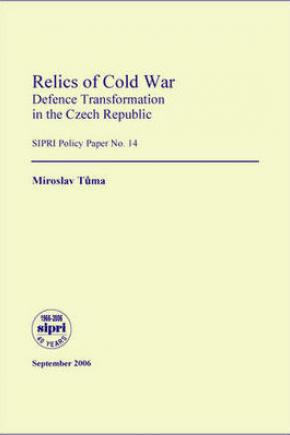Relics of Cold War: Defence Transformation in the Czech Republic
In the 17 years since the Velvet Revolution ended Communist rule in Czechoslovakia, the Czech military has transformed from a true 'relic of the cold war'—overlarge, rapidly obsolescent, highly politicized and deployed exclusively to confront NATO forces in the West—to a small, professional force that is making valuable contributions to European defence and to multinational operations around the world. On the way it has met and successfully overcome many political, economic, social and structural obstacles, not least the dissolution of the Czechoslovak federation.
In this policy paper, Czech defence researcher Miroslav Tůma examines how the Czech Republic has tackled the diverse challenges of defence reform—from force restructuring to the arms industrial adjustment to environmental protection—and the many factors, internal and external, that have shaped the process. The author highlights the important role that NATO entry in 1999, and assistance from NATO members in the run-up to accession, had in boosting the Czech Republic's defence performance on all fronts. At a time of renewed political uncertainty in the Czech Republic, he analyses the current status of defence reforms, the visions for the future and some of the pitfalls that defence planners and Czech society must avoid.
1. Introduction
2. Democratic control of the military
3. Reform of the organization, equipment and staffing of the armed forces
4. Personnel and social policy
5. International military cooperation
6. The defence economy
7. The armed forces and environmental protection
8. Conclusions
Appendix

